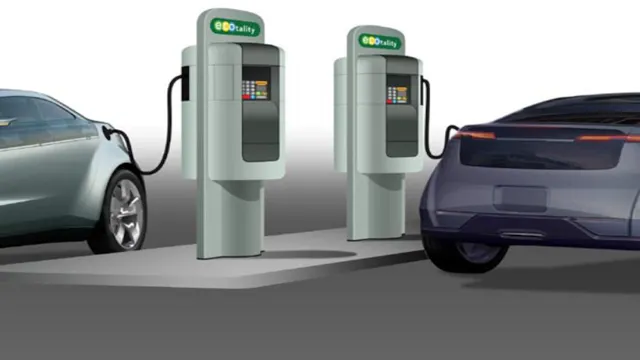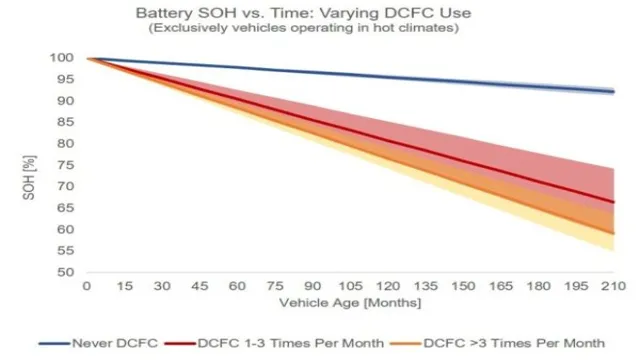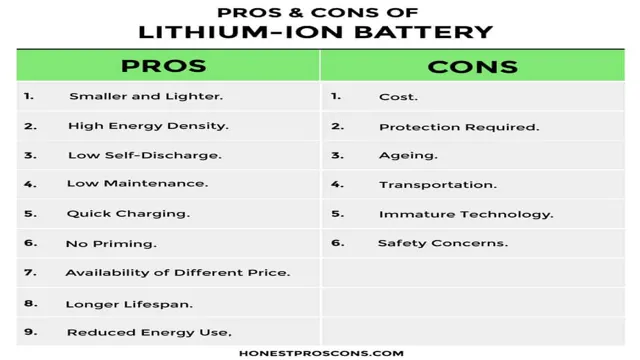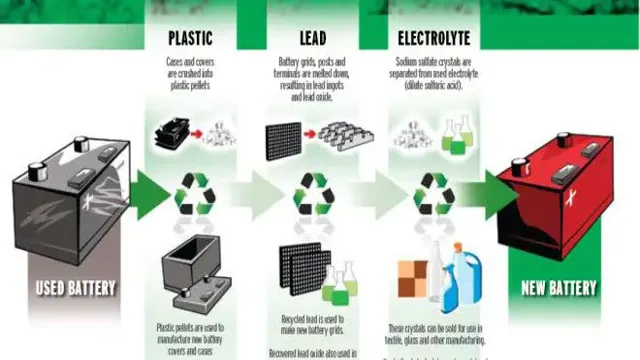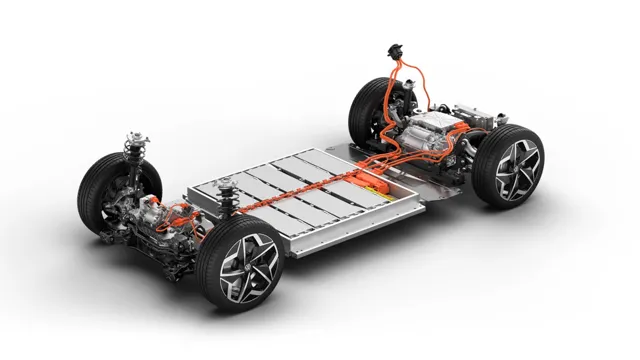Revolutionize Your Ride: The Ultimate Guide to Electric Car Battery Stations
As the world shifts towards sustainable transportation, electric cars are becoming increasingly popular. With their eco-friendly features and reduced carbon footprint, electric cars are the perfect choice for those who want to do their part in preserving the environment. However, one of the main concerns when it comes to electric cars is the limited range they offer.
This concern has led to the creation of electric car battery stations, which allows you to charge up your car on-the-go. Electric car battery stations are similar to gas stations, but instead of filling up a tank with fuel, you charge up your car battery. This revolutionary technology is a game-changer for the electric car industry, as it eliminates the need for electric car owners to worry about running out of charge mid-journey.
These charging stations can be found in various locations, including shopping malls, car parks, and even on major public roads. Setting up an electric car battery station only takes a few hours, and the charging process itself can be completed within the hour, depending on the battery size and speed. One of the benefits of electric car battery stations is that they are environmentally friendly, emitting no harmful pollutants that gasoline-based vehicles do.
Additionally, with many countries offering incentives to those who switch from fuel-based cars to electric ones, the cost of charging your car is substantially lower. With these benefits and an increasing number of electric cars on the roads, the demand for these battery stations is growing rapidly, leading to more companies investing in them. The future of transportation is electric, and electric car battery stations are a vital part of this global shift towards a more sustainable future.
Importance of Electric Vehicle Infrastructure
Electric car battery stations, also known as EV charging stations, are essential for the growth and success of the electric vehicle industry. As more and more people make the switch from fossil fuel vehicles to electric vehicles, the demand for charging stations continues to increase. Without enough stations available, drivers of electric cars may experience limited range and difficulty reaching their destination.
Having a reliable charging infrastructure is crucial for increasing the adoption of electric cars and reducing range anxiety. Not only does this infrastructure benefit individual drivers, but it also encourages businesses and municipalities to invest in electric vehicles, creating a ripple effect towards a greener future. It’s important for governments and private companies to invest in the establishment of more charging stations to ensure the availability of charging stations for all electric car owners.
Investing in electric car battery stations is investing in a cleaner and more sustainable future.
Reduce Carbon Footprint
Electric vehicles (EVs) have been gaining popularity in recent years as more people become aware of their environmental benefits. However, for EVs to truly make a significant impact in reducing our carbon footprint, it’s not just about the cars themselves but also the infrastructure to support them. This is why the importance of electric vehicle infrastructure cannot be overstated.
Without the proper charging stations and networks, EV owners face limited range and long wait times, discouraging people from making the switch. Building a robust electric vehicle infrastructure is essential in encouraging more drivers to switch to EVs and reducing our carbon emissions. By implementing more charging stations, we can provide more convenience for EV owners and further incentivize people to make the switch.
Not only will this help to reduce our carbon footprint but it will also provide a cleaner and healthier environment for us all.
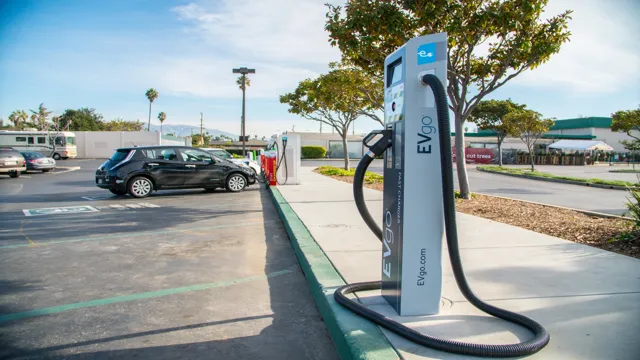
Lower Operating Costs
Lower Operating Costs As more and more people transition to electric vehicles, it is important to consider the infrastructure that supports them. Apart from being eco-friendly, electric vehicles offer a range of benefits, one of which includes lower operating costs. However, without the proper infrastructure in place, it may be difficult to take full advantage of this benefit.
EV infrastructure includes charging stations, plug-in spots, and battery swapping facilities. With these in place, owning and driving an electric vehicle becomes much more convenient and cost-effective. Imagine being able to charge your vehicle at work, or at a shopping center while you buy groceries.
This kind of convenience can encourage even more people to make the switch to electric vehicles, creating a ripple effect on the environment. With the right infrastructure in place, we can look forward to a future where driving electric vehicles is simple, affordable, and accessible to all.
Types of Electric Car Battery Stations
Electric car battery stations have become more and more common as the demand for electric cars increases. There are a few different types of electric car battery stations available, each with their own benefits and drawbacks. The most common type is the normal charging station, which can charge a car in a few hours.
Another type of station is the fast-charging station, which can charge a car to 80% in around 30 minutes. However, these stations tend to be more expensive, and not all electric cars are compatible with them. Finally, there are battery swapping stations, which allow drivers to swap out their depleted battery for a fully charged one in just a few minutes.
While these offer the fastest charging times, they are still relatively rare and not readily available in most areas. With the various types of electric car battery stations available, it’s important for drivers to understand the differences so that they can choose the right one for their needs.
Level 1 Charging Stations
Electric car charging stations come in different types, and level 1 charging stations are the slowest among them. These stations usually provide 120 volts of power and can take anywhere between eight to twenty-four hours to fully charge an electric vehicle, depending on the car’s battery capacity. Although they are not ideal for quick pit-stops, level 1 charging stations can be very convenient for overnight charging at home or in places where the vehicle will be parked for extended periods, like at workplaces or hotels.
Think of them as a slow drip coffee maker, which gradually adds enough caffeine to your system to start your day. While not the quickest way to charge your vehicle, level 1 charging stations can provide a reliable and cost-effective way to keep your electric car charged and ready to go whenever you need it.
Level 2 Charging Stations
Level 2 charging stations are an essential part of the electric car battery infrastructure. These charging stations use a 240-volt AC power source to supply energy to electric vehicle batteries. Level 2 charging stations are usually found in public places such as petrol stations, garages, and car parks.
This type of charging is much faster than a Level 1 charger. With a Level 2 charger, you can get between 15 miles and 40 miles of range per hour of charging. This type of charging is ideal for commuters who need to top up their car’s battery during the day or at work.
Additionally, Level 2 charging stations are relatively inexpensive and easy to install, making them a fantastic option for anyone who wants to support the move towards a greener future. Overall, Level 2 charging stations are a great investment for electric car owners who want to save money and reduce their carbon footprint.
Level 3 Charging Stations
Level 3 charging stations are a type of electric car battery station that provide a fast charging option for electric vehicles. These stations can charge an electric vehicle up to 80% in just 30 minutes, which is a significant improvement from Level 2 stations that usually take 4-6 hours to charge a car. Level 3 charging stations are also known as DC fast chargers and provide high voltage to quickly charge up a battery.
However, it’s important to note that not all electric cars are compatible with Level 3 charging stations, so car owners should check their vehicle’s specifications before using one. A popular Level 3 charging station provider is Tesla, which has a vast network of superchargers across various locations in the US and other regions. Overall, Level 3 charging stations provide an efficient and convenient option for electric car drivers who need to charge up quickly while on the go.
Electric Car Battery Station Networks
As electric cars become more popular, people are beginning to wonder if they will be able to travel long distances without worrying about running out of power. One solution to this problem is the creation of electric car battery station networks. These stations would be similar to gas stations, except they would have the ability to charge electric car batteries.
The great thing about electric car battery stations is that they will allow people to travel long distances without worrying about their car’s battery running out of power. This is because these stations will be placed strategically along popular routes, giving drivers the ability to charge their car’s battery whenever they need it. Imagine being able to take a road trip in your electric car without worrying about running out of power! Electric car battery stations will make this possible, and they will be a game-changer for the electric car industry.
Tesla Supercharger Network
The Tesla Supercharger network is an innovative solution to the range anxiety plaguing electric vehicle owners. For a long time, EV drivers were limited to certain areas due to the lack of charging infrastructure. Tesla’s charging network consists of over 25,000 Superchargers in more than 70 countries worldwide, providing owners with the freedom to travel wherever they desire.
These stations can add up to 200 miles of charge in just 15 minutes, making them incredibly convenient for those on long trips. The Supercharger network’s expansion is a significant milestone in the battle against climate change, making the transition from fossil fuels to electric power more accessible and efficient. When Tesla owners sign up for its service, they receive free access to the Supercharger network, making it an incredibly valuable perk and contributing to the vehicle’s long-term value.
The Supercharger network is a testament to Tesla’s commitment to sustainable technology and the future of transportation.
ChargePoint Network
The ChargePoint Network is one of the largest electric vehicle charging station networks globally, with over 114,000 charging spots and 100,000 individual customers. It’s a network that helps EV drivers charge up their batteries quickly and safely while they’re out and about. With a ChargePoint card, EV drivers can access ChargePoint stations in various locations, including commercial businesses, dining areas, and city streets.
The ChargePoint app is accessible for both Android and iOS users, permitting users to find available charging stations and pay for the charging service from their smartphones. The ChargePoint stations support multiple charging types, and some of the stations provide round-the-clock customer care services. Additionally, the company provides installation services for residential and commercial stations, making it more convenient for everyone to switch to electric vehicles.
Switching to electric vehicles is a great way to reduce your carbon footprint, and with the ChargePoint Network, it’s a lot easier to do so.
Future of Electric Car Battery Stations
The future of electric car battery stations looks bright, with technology advancing at a rapid rate. In the next few years, we can expect to see a revolution in the way we fuel our vehicles. Battery stations will become more efficient, and there will be more of them.
The lithium-ion batteries used in most electric cars today will be replaced with solid-state batteries, which are safer, more durable, and take less time to charge. This will make it easier for users to charge their vehicles, with charging times similar to that of filling up a gas tank. Additionally, the energy used to charge cars will continue to come from more sources, including solar and wind power.
Overall, these advancements will make owning an electric car more accessible, cost-effective, and environmentally-friendly.
Conclusion
In conclusion, electric car battery stations are the refueling stops of the future. No longer will we be tied to the gas pump, forced to watch our wallets and the smog levels rise. Instead, we can recharge our vehicles with clean energy while grabbing a coffee or taking a nap.
It’s like a gas station, but with a side of zen and sustainability. So, let’s leave fossil fuels in the past and rev up for a brighter, cleaner road ahead!”
FAQs
What are electric car battery stations?
Electric car battery stations are locations where electric vehicle owners can recharge their car batteries. These stations are typically equipped with charging ports and can be found in various locations across cities and highways.
How long does it take to charge an electric car at a battery station?
The time it takes to charge an electric car at a battery station can vary depending on the make and model of the car, as well as the type of charging port being used. Typically, a full charge can take anywhere from 30 minutes to several hours.
Are electric car battery stations easy to find?
While electric car battery stations are becoming more prevalent, they may not be as easy to find as gas stations. However, there are several mobile apps and websites available that can help you locate the nearest electric car battery station.
Can I charge my electric car at home, or do I need to use a battery station?
While some electric car owners prefer to use battery stations, it is also possible to charge your car at home using a dedicated electric vehicle charging station. This can provide a convenient and cost-effective option for those who have access to an electrical outlet.

